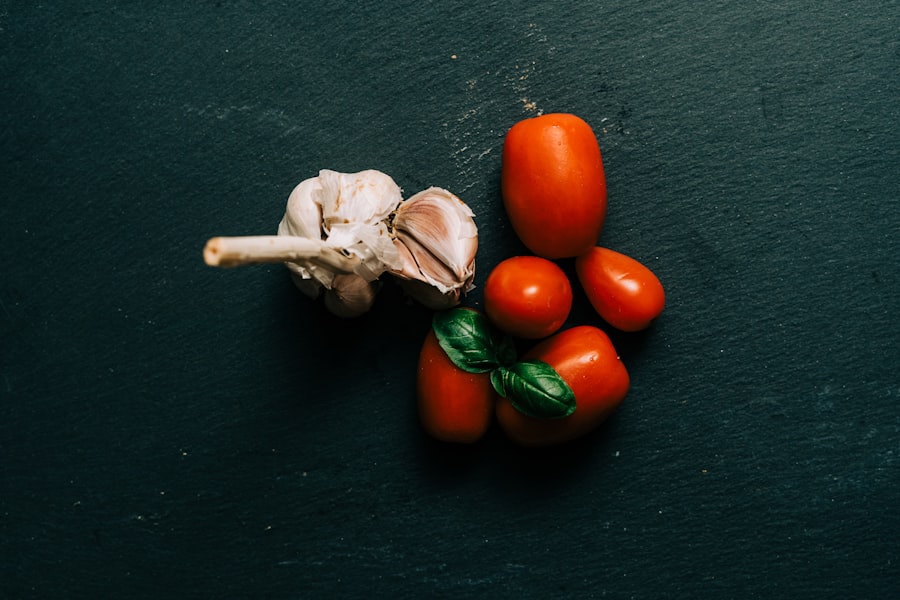Food science is a fascinating field that intertwines the art of cooking with the principles of chemistry, biology, and physics. It delves into the mysteries of how ingredients interact, how flavors develop, and how cooking techniques can transform raw materials into culinary masterpieces. The exploration of food science not only enhances culinary practices but also provides insights into nutrition, food safety, and sustainability.
As chefs and food scientists work together, they unravel the complexities of food, revealing the hidden wonders that lie within everyday ingredients. The allure of food science lies in its ability to demystify the processes that occur in the kitchen. From the Maillard reaction that gives grilled meats their distinctive flavor to the emulsification that creates creamy sauces, understanding these phenomena can elevate cooking from a mere task to an art form.
As individuals become more curious about what happens at a molecular level during cooking, they gain a deeper appreciation for the culinary arts and the science that supports it. This article will explore various aspects of food science, shedding light on the breakthroughs and innovations that continue to shape the way people cook and eat.
Key Takeaways
- Food science holds many mysteries waiting to be uncovered and understood.
- Culinary breakthroughs play a crucial role in advancing food science and innovation.
- Cooking techniques are deeply rooted in science and understanding them can elevate culinary skills.
- Flavor development is a complex process that involves a deep understanding of chemistry and sensory perception.
- The texture and structure of food are influenced by the chemistry behind it, impacting the overall dining experience.
The Role of Culinary Breakthroughs in Food Science
Culinary breakthroughs have played a pivotal role in advancing food science, leading to innovative techniques and new ways of thinking about food preparation. These breakthroughs often stem from a combination of traditional cooking methods and modern scientific research. For instance, the advent of sous-vide cooking has revolutionized how chefs approach temperature control and food safety.
By vacuum-sealing food in plastic bags and cooking it at precise temperatures in water baths, chefs can achieve consistent results while preserving the integrity of flavors and textures. Moreover, culinary breakthroughs have also led to the development of new ingredients and food products that cater to evolving consumer preferences. The rise of plant-based alternatives, for example, has prompted food scientists to explore how to replicate the taste and texture of meat using legumes, grains, and other plant sources.
This innovation not only addresses dietary restrictions but also promotes sustainability by reducing reliance on animal agriculture. As culinary professionals continue to push boundaries, they inspire a new generation of food scientists to explore uncharted territories in flavor and nutrition.
Understanding the Science Behind Cooking Techniques

Cooking techniques are not merely methods; they are grounded in scientific principles that dictate how heat interacts with food. For instance, roasting involves dry heat that caramelizes sugars and browns proteins, creating complex flavors through the Maillard reaction. Understanding this process allows cooks to manipulate variables such as temperature and time to achieve desired outcomes.
Similarly, techniques like steaming preserve nutrients better than boiling, as they minimize contact with water and reduce leaching. Furthermore, the science behind cooking techniques extends to the use of various tools and equipment. The introduction of modern appliances such as pressure cookers and induction stoves has transformed traditional cooking methods.
Pressure cooking, for example, utilizes steam under pressure to cook food faster while retaining moisture and flavor. By grasping the underlying science of these techniques, cooks can make informed decisions that enhance their culinary creations while ensuring safety and efficiency in the kitchen.
Uncovering the Secrets of Flavor Development
| Flavor Development Stage | Key Factors | Impact on Flavor |
|---|---|---|
| Raw Material Selection | Quality, ripeness, variety | Determines initial flavor profile |
| Processing Methods | Heat, fermentation, aging | Alters chemical composition and flavor compounds |
| Storage Conditions | Temperature, humidity, light exposure | Affects flavor stability and development |
| Packaging | Material, sealing, oxygen exposure | Preserves or alters flavor over time |
Flavor development is one of the most intriguing aspects of food science, encompassing a complex interplay of taste, aroma, and mouthfeel. The five basic tastes—sweet, sour, salty, bitter, and umami—serve as the foundation for flavor profiles. However, it is the aromatic compounds released during cooking that elevate these basic tastes into a harmonious experience.
For instance, the browning of onions releases sugars that contribute sweetness while also producing aromatic compounds that enhance overall flavor. Additionally, understanding how different ingredients interact can lead to innovative flavor combinations. The concept of flavor pairing suggests that ingredients with similar aromatic compounds can complement each other beautifully.
For example, pairing strawberries with balsamic vinegar creates a balance between sweetness and acidity that enhances both flavors. By exploring these interactions through a scientific lens, chefs can craft dishes that surprise and delight diners while pushing the boundaries of traditional flavor profiles.
Exploring the Chemistry of Food Texture and Structure
Texture is a critical component of food that significantly influences consumer perception and enjoyment. The chemistry behind texture involves understanding how various components—such as proteins, fats, carbohydrates, and water—interact to create different mouthfeels. For instance, the gelatinization of starches during cooking transforms them from hard granules into a creamy consistency in sauces or puddings.
This transformation is essential for achieving desirable textures in many dishes. Moreover, the structure of food can be manipulated through techniques such as emulsification or foaming. Emulsifiers like lecithin allow oil and water to blend seamlessly, creating stable sauces like mayonnaise or hollandaise.
Similarly, foaming agents can introduce air into mixtures, resulting in light and airy textures found in mousses or soufflés. By understanding these chemical processes, chefs can experiment with textures to create unique dining experiences that engage all the senses.
The Influence of Temperature and Time on Food Transformation

Temperature and time are two critical factors that influence how food transforms during cooking. Each ingredient has an optimal temperature range for cooking that maximizes flavor development while minimizing nutrient loss. For example, vegetables often benefit from quick cooking methods like blanching or stir-frying at high temperatures to preserve their vibrant colors and crisp textures.
Conversely, tougher cuts of meat require low-and-slow cooking methods to break down collagen fibers and achieve tenderness. The relationship between temperature and time is also evident in baking, where precise measurements are crucial for achieving desired results. Overbaking can lead to dry cakes or burnt crusts, while underbaking may result in gooey centers.
Understanding how heat affects chemical reactions within food allows bakers to fine-tune their recipes for optimal outcomes. As cooks become more attuned to these principles, they can experiment with different cooking times and temperatures to unlock new flavors and textures.
Harnessing the Power of Ingredients and Their Interactions
The choice of ingredients is fundamental to any culinary creation, as each component brings its unique characteristics to a dish. Food scientists study these ingredients’ chemical compositions to understand how they interact during cooking processes. For instance, acids like lemon juice or vinegar can enhance flavors by brightening dishes while also acting as tenderizers for proteins through their ability to break down muscle fibers.
Moreover, the synergy between ingredients can lead to unexpected yet delightful results. The combination of fat and acid is a classic example; fats carry flavors while acids provide balance. A rich avocado dressing benefits from a splash of lime juice that cuts through its creaminess, creating a well-rounded flavor profile.
By harnessing these interactions thoughtfully, chefs can elevate their dishes beyond mere sustenance into memorable culinary experiences.
Innovations in Food Preservation and Shelf Life Extension
Food preservation is an essential aspect of food science that ensures safety and reduces waste. Innovations in this field have led to various methods for extending shelf life while maintaining quality. Techniques such as vacuum sealing and freeze-drying remove moisture from foods, inhibiting microbial growth while preserving nutrients and flavors.
These methods have become increasingly popular among both home cooks and commercial producers seeking to offer fresh-tasting products with longer shelf lives. Additionally, advancements in packaging technology have revolutionized how food is stored and transported. Modified atmosphere packaging (MAP) replaces oxygen with inert gases like nitrogen or carbon dioxide to slow down spoilage processes.
This innovation has been particularly beneficial for perishable items such as fruits and vegetables, allowing them to reach consumers in optimal condition. As food scientists continue to explore new preservation techniques, they contribute significantly to reducing food waste and enhancing global food security.
The Impact of Culinary Breakthroughs on Health and Nutrition
Culinary breakthroughs have far-reaching implications for health and nutrition as they enable chefs to create dishes that are not only delicious but also nutritious. The rise of health-conscious eating has prompted innovations such as low-sugar alternatives or gluten-free options that cater to dietary restrictions without sacrificing flavor.
Moreover, advancements in food technology have led to fortified foods that provide essential nutrients lacking in many diets. For instance, incorporating omega-3 fatty acids into everyday products like eggs or yogurt helps consumers meet their nutritional needs without altering their eating habits significantly. As culinary breakthroughs continue to evolve alongside scientific research, they pave the way for healthier eating patterns that promote overall well-being.
Future Trends in Food Science and Culinary Innovation
The future of food science promises exciting developments as technology continues to advance at an unprecedented pace. One emerging trend is the integration of artificial intelligence (AI) in recipe development and flavor pairing analysis. AI algorithms can analyze vast amounts of data on ingredient interactions and consumer preferences to suggest innovative combinations that chefs may not have considered otherwise.
Additionally, sustainability will remain a driving force behind culinary innovation as consumers increasingly demand environmentally friendly practices. This includes exploring alternative protein sources such as lab-grown meat or insect-based products that minimize environmental impact while providing nutritious options. As chefs embrace these trends alongside scientific advancements, they will shape a future where culinary creativity meets sustainability for a healthier planet.
The Endless Possibilities of Food Science and Culinary Exploration
Food science is an ever-evolving field filled with endless possibilities for exploration and innovation. As chefs continue to push boundaries through culinary breakthroughs while collaborating with scientists, they unlock new dimensions of flavor, texture, and nutrition that enhance dining experiences worldwide. Understanding the science behind cooking techniques allows individuals not only to improve their culinary skills but also fosters a deeper appreciation for the artistry involved in creating delicious meals.
The journey through food science reveals a world where creativity meets scientific inquiry—a realm where every ingredient holds potential waiting to be discovered. As individuals embrace this intersection between art and science in their kitchens, they contribute to a vibrant culinary landscape rich with diversity and innovation. Ultimately, the mysteries of food science invite everyone on a journey filled with exploration—a journey where every meal becomes an opportunity for discovery.
In the fascinating world of food science, many mysteries have puzzled researchers and enthusiasts alike. One such enigma was recently unraveled, shedding light on the complex interactions between ingredients that affect flavor and texture. For those interested in delving deeper into the intriguing discoveries of food science, a related article can be found on Hey Did You Know This.
To read more about these captivating developments, check out the article on Hey Did You Know This.
WATCH THIS! 🌭The 100-Year Scam That Invented Hot Dogs
FAQs
What are some common food science mysteries that have been solved?
Some common food science mysteries that have been solved include the Maillard reaction, the science behind fermentation, and the role of emulsifiers in food.
What is the Maillard reaction and how has it been solved?
The Maillard reaction is a chemical reaction between amino acids and reducing sugars that gives browned food its distinctive flavor. Scientists have solved the mystery behind the Maillard reaction by understanding the specific chemical reactions and pathways involved in the process.
What is the science behind fermentation and how has it been solved?
Fermentation is a metabolic process that converts carbohydrates, such as sugars and starches, into alcohol or organic acids using microorganisms such as yeast or bacteria. Scientists have solved the mystery behind fermentation by studying the specific microorganisms involved and the biochemical pathways that lead to the production of alcohol or organic acids.
What is the role of emulsifiers in food and how has it been solved?
Emulsifiers are substances that help mix ingredients that do not normally mix, such as oil and water. Scientists have solved the mystery behind emulsifiers by understanding the specific molecular interactions that allow emulsifiers to stabilize and maintain the mixture of oil and water in food products.
